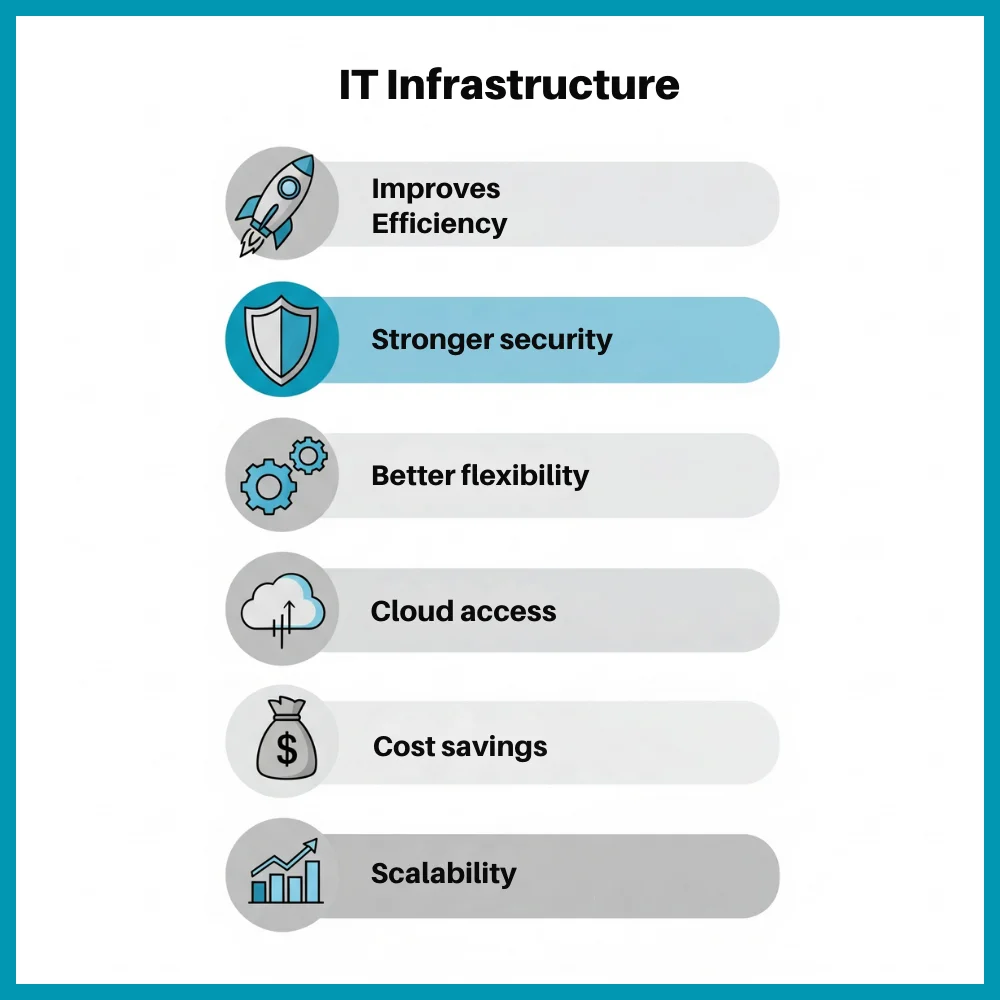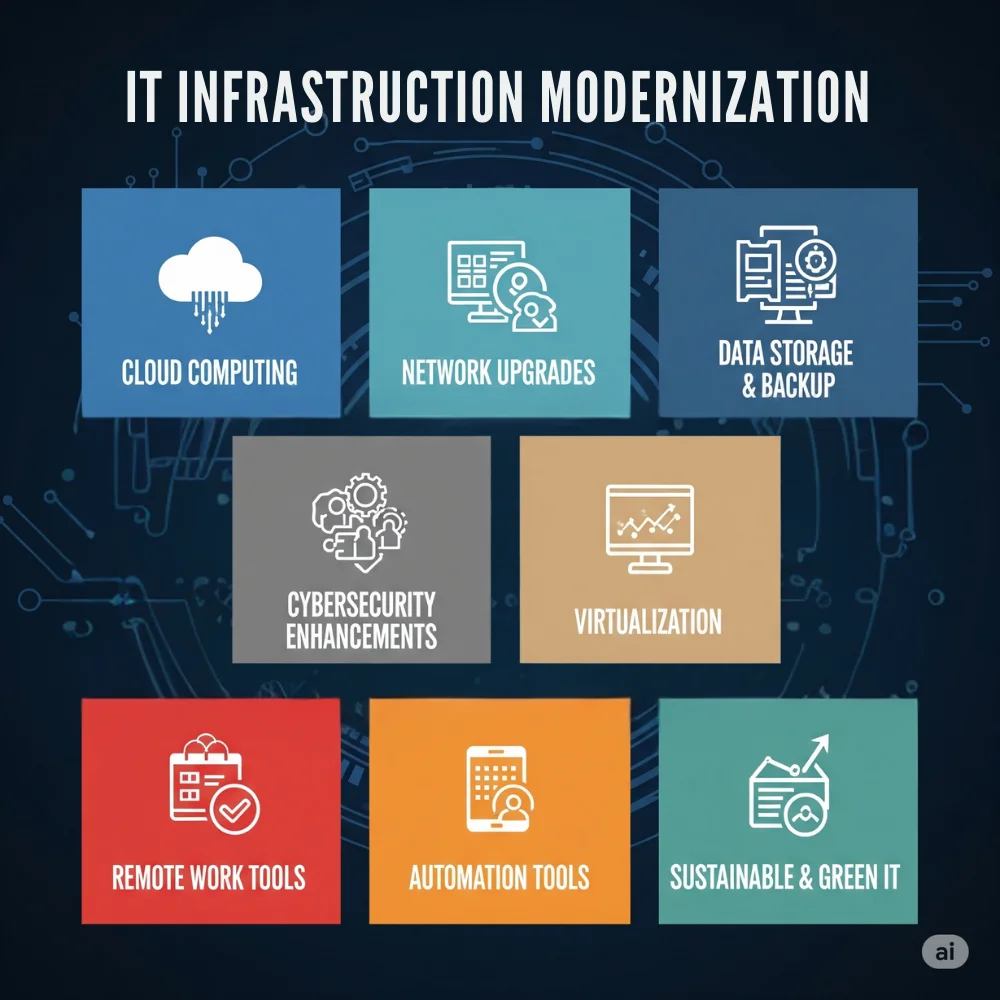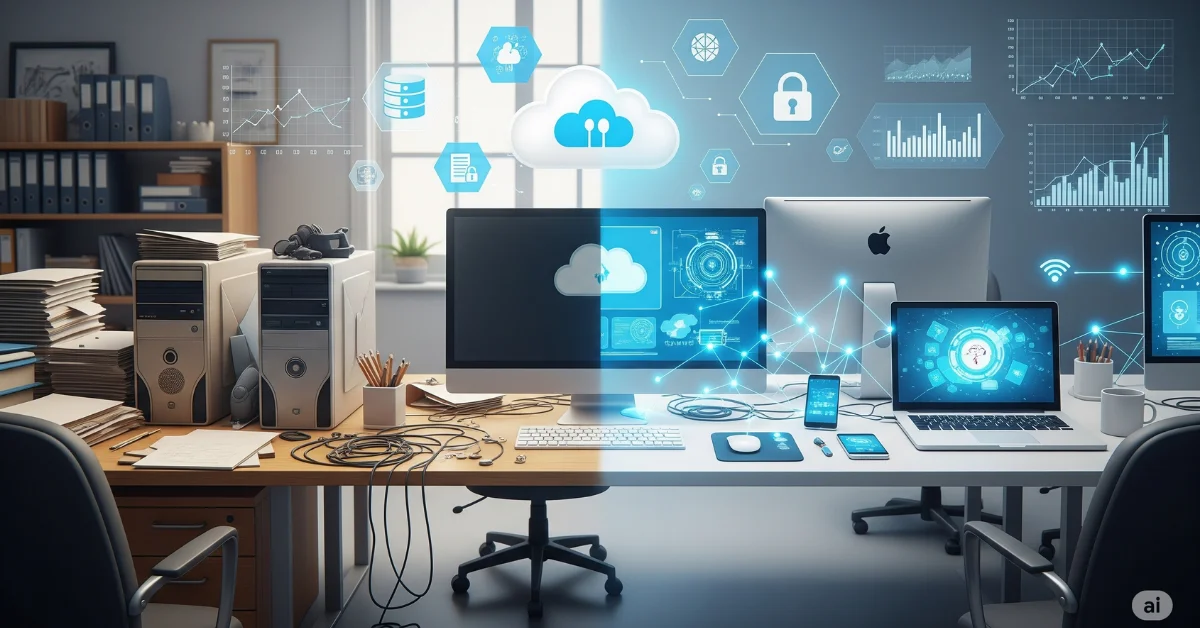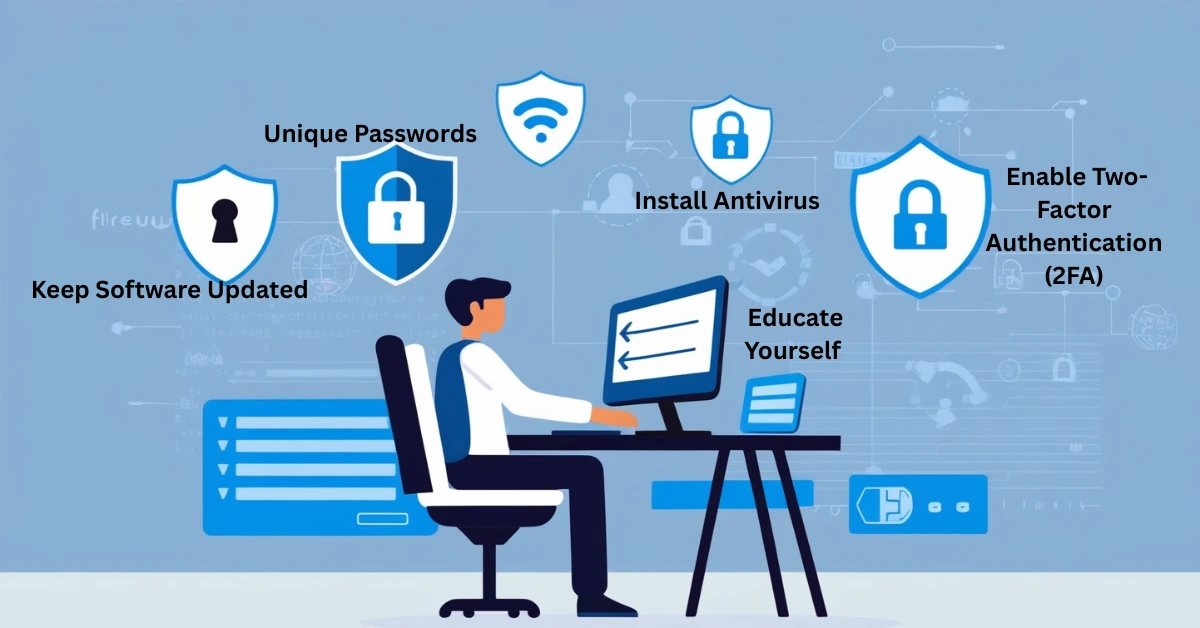In today’s rapidly evolving digital landscape, organizations rely extensively on their IT systems to operate efficiently and maintain a competitive edge. Whether it’s a small office or a large company, having modern and reliable IT infrastructure is important. Outdated systems can slow you down, cost more money, and even put your data at risk. That’s why upgrading your IT setup with modern tools and strategies is not just smart it’s necessary.
What is IT Infrastructure?
IT infrastructure refers to all the tech tools and systems a business uses to support its operations. This includes:
- Hardware: Computers, servers, routers, and storage devices
- Software: Operating systems, apps, and platforms
- Network: Internet, intranet, and internal data flow systems
- Data storage and management
- Security tools
- Cloud services
Together, these parts allow businesses to communicate, store information, run applications, and protect sensitive data.
Why Upgrade Your IT Infrastructure?
When your IT systems are outdated or running slowly, you may find yourself constantly troubleshooting issues rather than focusing on growing your business. Below are some clear indicators that it’s time for an upgrade:
- Frequent system crashes or slow performance
- Trouble supporting remote work or mobile access
- Security concerns or outdated antivirus tools
- Inability to handle new apps or software updates
- High maintenance costs and energy usage
- Poor data backup and recovery solutions
By modernizing your infrastructure, you can improve performance, save money, boost security, and make your systems easier to manage.
Benefits of Modern IT Infrastructure

Upgrading your IT systems brings many benefits that go beyond just faster computers. Some of these include:
- Improved Efficiency: Faster systems mean your staff can get more done in less time
- Stronger Security: Newer systems come with built-in security tools and updates
- Better Flexibility: Easily support remote workers and mobile users
- Cloud Access: Store and access files from anywhere without losing security
- Cost Savings: Reduced downtime and energy usage means more savings
- Scalability: Grow your systems as your business expands
Key Areas to Modernize in IT Infrastructure

Upgrading doesn’t always mean replacing everything at once. Here are the main areas to focus on:
1. Cloud Computing
Cloud services are now at the center of modern IT systems. They let you store files, run applications, and access tools online instead of keeping everything on physical machines.
Types of Cloud Services:
- IaaS (Infrastructure as a Service): Rent servers and storage from providers like AWS, Azure, or Google Cloud
- PaaS (Platform as a Service): Develop and deploy apps without managing hardware
- SaaS (Software as a Service): Use apps like Google Workspace or Microsoft 365 directly from the web
Why Use the Cloud?
- Lower costs for hardware
- Fast setup and changes
- Data recovery in case of disaster
- Easy access from any device
2. Network Upgrades
A strong network is key to fast and secure communication. Older networks can slow down your whole system and increase the risk of cyberattacks.
Upgrade Tips:
- Use high-speed fiber internet if available
- Install advanced routers and switches
- Add firewalls for better security
- Set up virtual private networks (VPNs) for remote work
- Use network monitoring tools to find and fix problems fast
3. Data Storage and Backup
Data is one of your most valuable assets. Losing it due to a system crash or attack can be devastating. Modern storage and backup options offer both safety and convenience.
Smart Solutions:
- Use hybrid storage (a mix of local and cloud storage)
- Set up automatic backups
- Use encrypted external drives for sensitive data
- Test your backup regularly to ensure it works
4. Cybersecurity Enhancements
Hackers are getting smarter, so your security tools must too. Upgraded cybersecurity keeps your data safe and your business trusted.
Must-Have Security Upgrades:
- Install modern antivirus and anti-malware software
- Use two-factor authentication (2FA)
- Set up intrusion detection systems (IDS)
- Regularly update software and firmware
- Train employees to spot phishing and scams
5. Virtualization
Virtualization means running multiple virtual systems on a single physical machine. It helps reduce physical space requirements, lowers costs, conserves energy, and simplifies overall system management.
Benefits Include:
- Run different operating systems without extra hardware
- Use resources more efficiently
- Simplify backups and disaster recovery
- Improve testing and development environments
6. Remote Work Tools
Modern businesses need to support remote teams and hybrid work models. This requires flexible and secure tools for communication and file sharing.
Useful Remote Work Solutions:
- Cloud storage for shared documents
- Project management tools like Trello, Asana, or Monday.com
- Video calling apps like Zoom, Teams, or Google Meet
- Virtual desktops to access office systems from anywhere
- Endpoint protection to secure employee devices
7. Automation Tools
Automation helps reduce manual work, lower errors, and boost productivity. Many tasks like backups, software updates, and reporting can be automated.
Areas to Automate:
- Software patching
- Data backups
- System monitoring alerts
- Customer support (chatbots, ticketing systems)
- Billing and invoicing
8. Sustainable and Green IT
Modern infrastructure is not just smarter, it’s greener. Choosing energy-efficient hardware and reducing waste can save costs and help the planet.
Eco-Friendly Moves:
- Use energy-efficient servers and machines
- Recycle old devices safely
- Move to cloud-based systems to reduce on-site hardware
- Use smart power management systems
Planning the Upgrade Process
Upgrading your IT systems doesn’t need to happen overnight. A good plan helps make the process smooth and cost-effective.
Steps to Follow:
- Assess Current Infrastructure
Identify what’s working and what’s not. List all hardware, software, and network tools in use. - Define Your Goals
Do you want better speed, improved security, or support for remote work? Be clear about what you need. - Set a Budget
Decide how much you can spend, and divide it across different upgrades. - Prioritize Changes
Start with the most outdated or risky areas, like unsupported software or slow networks. - Create a Timeline
Break the upgrade into smaller steps over weeks or months, depending on business needs. - Train Your Team
New systems need new skills. Train staff to use updated tools effectively. - Work with IT Experts
If you don’t have an in-house IT team, hire professionals to guide and support your upgrades.
Common Mistakes to Avoid
Even with a good plan, mistakes can happen. Avoiding these can save time and money:
- Ignoring backup systems before upgrades
- Skipping employee training
- Buying too much hardware too soon
- Not checking compatibility with existing tools
- Forgetting about software licenses and legal issues
Tools and Services to Consider
Here are some trusted tools and platforms that can help during your upgrade:
- Cloud Services: AWS, Google Cloud, Microsoft Azure
- Remote Access: AnyDesk, TeamViewer, Citrix
- Security Tools: Bitdefender, Norton, Fortinet, Cisco Umbrella
- Collaboration Tools: Microsoft 365, Google Workspace, Slack
- Automation: Zapier, IFTTT, Microsoft Power Automate
- Data Backup: Acronis, Backblaze, Carbonite
Final Thoughts
Upgrading your IT infrastructure with modern solutions is one of the smartest steps a business can take. It not only improves performance but also keeps your data secure, supports modern work styles, and prepares your company for future growth. By using cloud tools, securing your network, supporting remote work, and keeping everything updated, you create a system that works for today and tomorrow. With a good plan, the right tools, and proper guidance, any business can move forward with confidence and stay ahead in the digital world.



